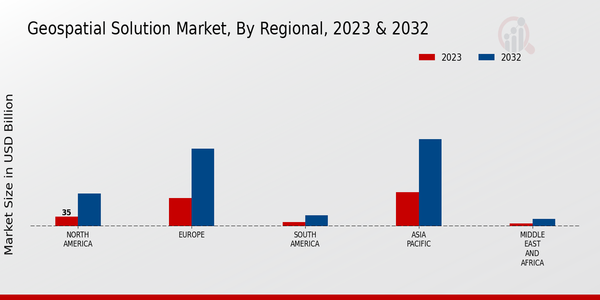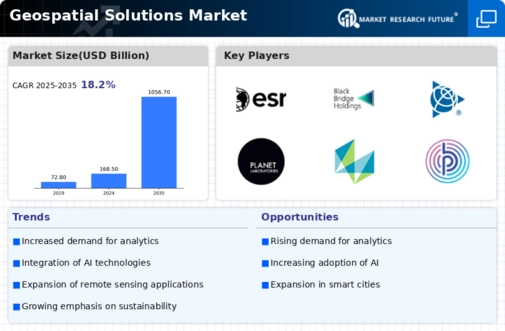The Global Geospatial Solutions Market is segmented by region into North America, Europe, APAC, South America, and MEA. North America is the largest regional market for Geospatial Solutionss, accounting for over 35% of the global market revenue. The region is home to a number of leading geospatial technology companies, as well as a large and growing number of users of geospatial data and services. Europe is the second-largest regional market for Geospatial Solutionss, accounting for over 25% of the global market revenue.
The region is home to a number of major geospatial technology companies, as well as a large and growing number of users of geospatial data and services.
APAC is the third largest regional market for Geospatial Solutionss, accounting for over 20% of the global market revenue. The region is experiencing rapid growth in the adoption of geospatial technologies, driven by a number of factors, including the increasing availability of affordable and accessible geospatial data and services, the growing demand for geospatial data and services from a variety of industries, and the increasing adoption of geospatial technologies by governments. South America is the fourth largest regional market for Geospatial Solutionss, accounting for over 10% of the global market revenue.
The region is experiencing steady growth in the adoption of geospatial technologies, driven by a number of factors, including the increasing availability of affordable and accessible geospatial data and services, the growing demand for geospatial data and services from a variety of industries, and the increasing adoption of geospatial technologies by governments. MEA is the fifth largest regional market for Geospatial Solutionss, accounting for over 5% of the global market revenue.
The region is experiencing rapid growth in the adoption of geospatial technologies, driven by a number of factors, including the increasing availability of affordable and accessible geospatial data and services, the growing demand for geospatial data and services from a variety of industries, and the increasing adoption of geospatial technologies by governments.

Source: Primary Research, Secondary Research, Market Research Future Database and Analyst Review
















